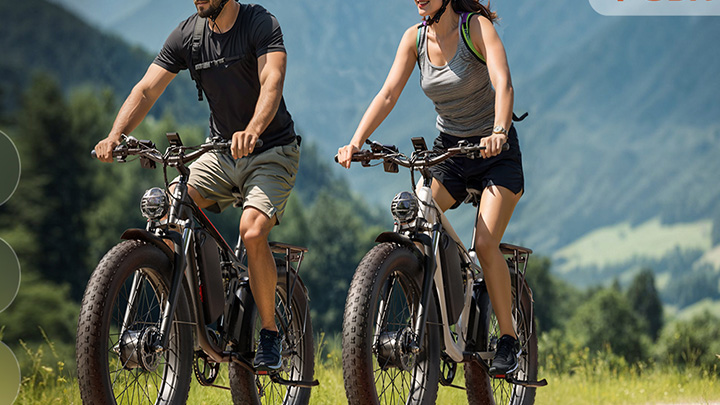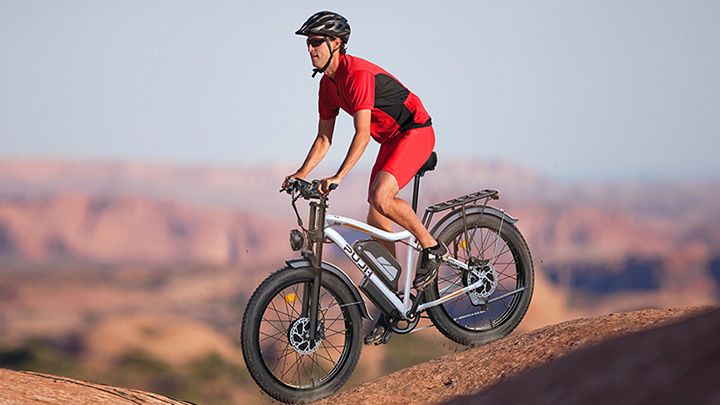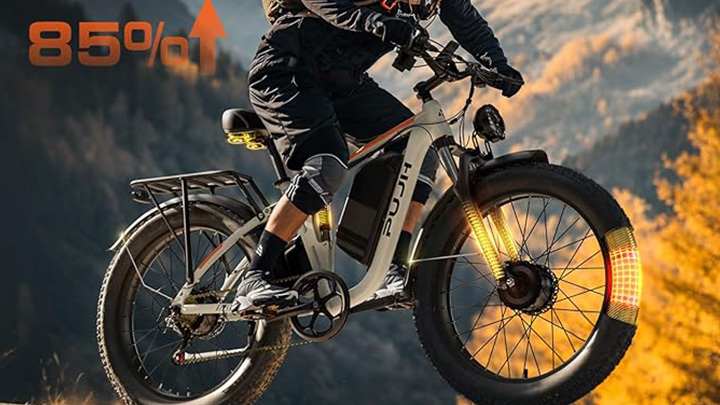How to Choose the Right Electric Snow Bicycle
Electric snow bicycles, often referred to as fat tire e-bikes, are designed to handle snowy terrains, icy paths, and off-road adventures. Choosing the right electric snow bicycle requires careful attention to features that ensure safety, performance, and comfort in harsh winter conditions. Here’s a detailed guide to help you pick the best electric snow bicycle.
1. Understand Your Riding Needs
Before diving into the specifics, identify your primary use for the bike:
- Commuting: Look for an e-bike with a long-range battery and reliable motor to handle snowy commutes.
- Recreation: If you enjoy exploring trails in the snow, prioritize durability, suspension, and wider tires for better stability.
- Heavy Snow Conditions: For deep snow and ice, a powerful motor and advanced traction control are essential.
2. Fat Tires: The Key to Snow Riding
Fat tires are the defining feature of snow e-bikes, providing enhanced traction and stability.
- Width: Opt for tires between 4.0 to 5.0 inches wide for optimal grip on snow and ice.
- Tread Pattern: Aggressive tread patterns offer better traction, especially in deep snow.
- Tire Pressure: Look for tires that allow low-pressure adjustments (5–15 PSI), improving contact with slippery surfaces.
3. Motor Power and Placement
A strong motor ensures the bike can handle snow and steep inclines:
- Motor Power: Choose a motor with at least 500W for snow riding; 750W or higher is ideal for challenging terrains.
- Mid-Drive vs. Hub Motor:
4. Battery Capacity and Range
Snow riding typically consumes more battery due to the added resistance of snow and cold weather.
- Battery Capacity: Look for a battery with at least 500Wh; 700Wh or more is preferable for long rides.
- Cold Weather Performance: Some batteries lose efficiency in freezing temperatures. Check for models with insulation or cold-weather features.
- Removable Batteries: A removable battery allows you to store it indoors when not in use, preserving battery life in extreme cold.
5. Frame Material and Design
The frame needs to be durable and able to support the extra weight of the motor, battery, and rider:
- Material: Aluminum frames are lightweight and resistant to rust, while steel frames offer additional strength but are heavier.
- Step-Through vs. Traditional Frames: Step-through frames make it easier to mount and dismount, especially when wearing winter gear.
6. Suspension System
A good suspension system absorbs shocks and improves ride comfort:
- Front Suspension: Essential for bumpy or uneven snowy surfaces.
- Full Suspension: Recommended for riders tackling deep snow or rugged terrains.
7. Braking System
Snow and ice require reliable braking systems for safety:
- Hydraulic Disc Brakes: Offer superior stopping power in wet and icy conditions.
- Mechanical Disc Brakes: A more affordable option, though slightly less effective in extreme weather.
8. Gearing
Gears help you adjust to varying snow conditions:
- Wide Gear Range: Essential for climbing snowy hills and riding through dense snow.
- Single-Speed vs. Multi-Speed: Multi-speed e-bikes are more versatile for snow riding.
9. Additional Features for Winter Riding
Equip your e-bike with features to make snow riding safer and more comfortable:
- Lights: Bright LED headlights and taillights for visibility during shorter daylight hours.
- Fenders: Keep snow and slush from splashing onto you.
- Pedal Assist and Throttle: Pedal assist modes make it easier to ride through snow, while throttles provide extra power when needed.
- Heating Accessories: Heated grips or battery warmers can enhance comfort and performance in cold weather.
10. Weight and Portability
Fat tire e-bikes are generally heavier due to their larger components. Consider:
- Weight Capacity: Ensure the bike can support your weight along with any gear or cargo.
- Foldable Models: Some snow e-bikes come with foldable frames for easy storage and transport.
11. Budget and Warranty
Electric snow bicycles vary widely in price. Determine your budget and focus on the features most important to you:
- Budget-Friendly Options: Available from $1,500 to $2,000, suitable for casual riders.
- Premium Models: Costing $3,000 or more, these offer advanced features and higher durability.
- Warranty: Check for comprehensive warranties covering the motor, battery, and frame.
12. Test Ride and Reviews
Whenever possible, test ride different models to experience how they handle snow and icy conditions. Additionally, read reviews from other users to learn about real-world performance and reliability.
Conclusion
Choosing the right electric snow bicycle involves balancing your needs, budget, and terrain requirements. With fat tires, a powerful motor, and a reliable braking system, an e-bike designed for snow can open up new opportunities for winter exploration and commuting. Invest in quality, and you’ll enjoy safe, thrilling rides through snowy landscapes for years to come.




